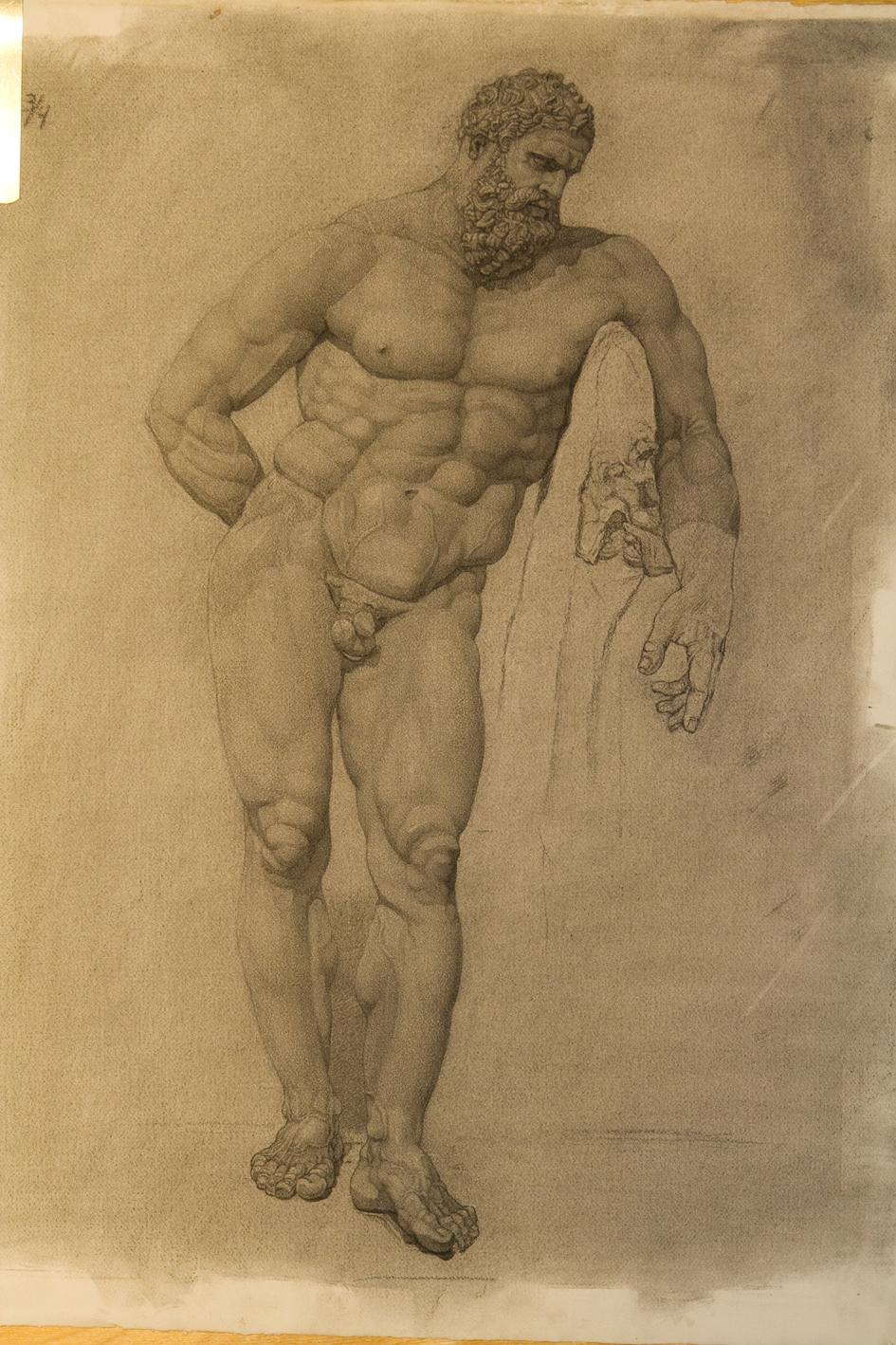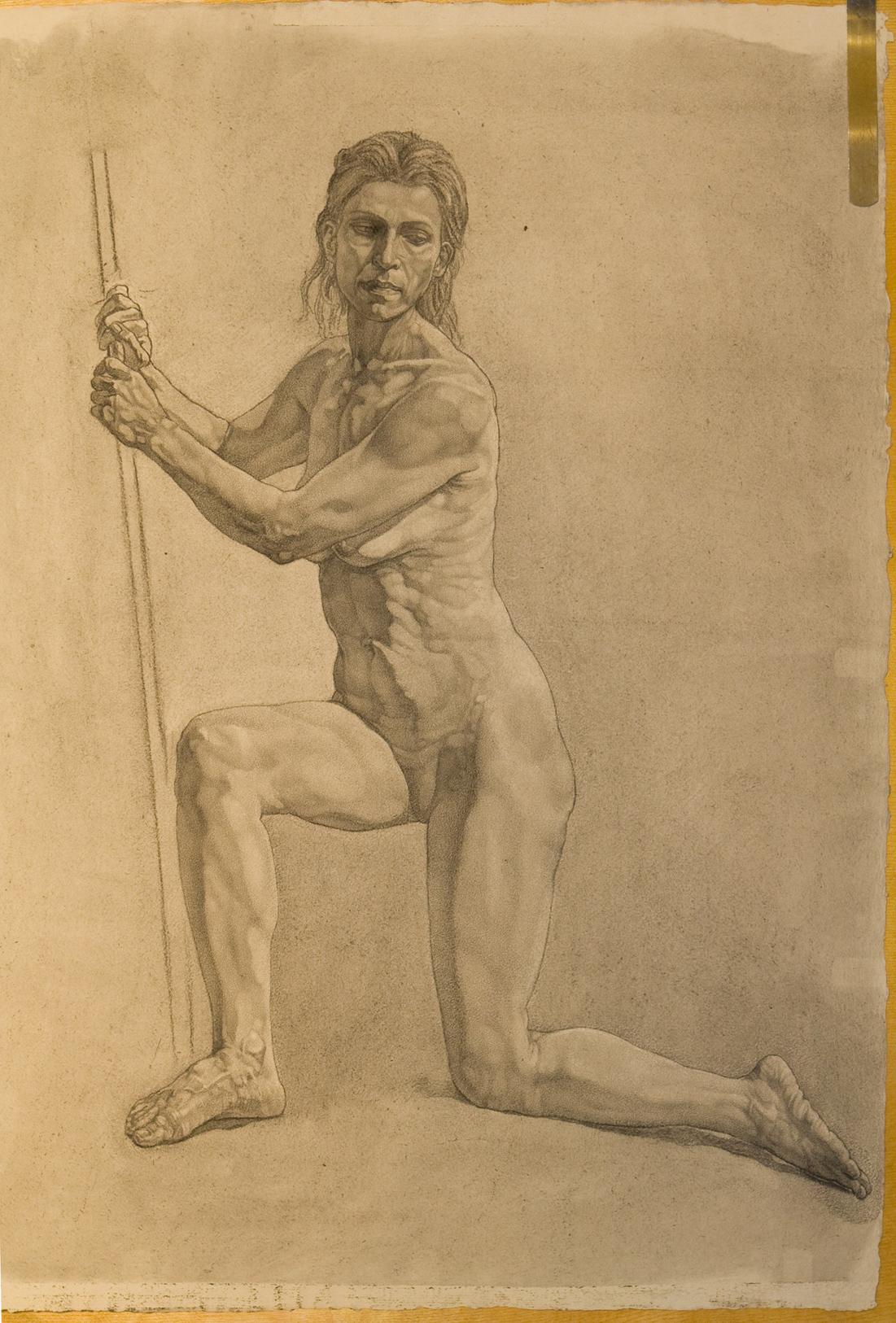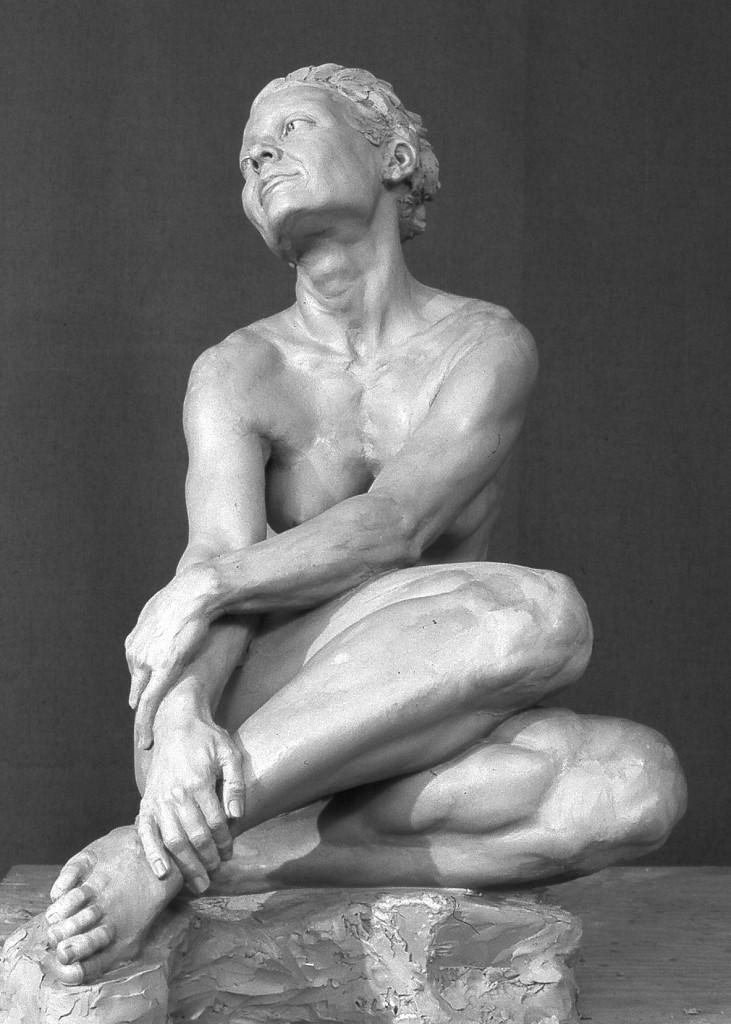About the Artist
Welcome to the web presence of The Parker Studio of Structural Sculpture, a Baltimore-based fine art studio and atelier directed by P. Brad Parker. Parker has devoted his life to study of the esthetic principles and artistic methods that have informed classical sculpture since Greek antiquity. As a teacher, he seeks to share his unique understanding of those principles and methods through a rigorous program of training based on “learning by doing” as well as content theory. The Parker Studio offers instruction for students who desire an authentic and advanced knowledge of historic practices. It offers a more integrated, dimensional vision of nature and its complex forms than contemporary fine-art ateliers picking up where misguided latter-day academicians left off. In his own sculptural work, Parker has found much inspiration in the more particularized portraiture of the Hellenistic period (ca. 330 BC-200 AD). This “realism,” as many would call it, gives his own work a decidedly modern feel. But in its tectonic and geometric rigor it stands a world apart from the modernistic naturalism and simplistic formal content pervasive in latter-day “traditional” or “classical realist” work. Please explore this web site to learn more about Brad and what he has to offer both as a teacher and as a creator of portraits and religious and mythological compositions.Peyton Brad Parker website View Website Peyton Brad Parker website View Gallery Peyton Brad Parker website Purchase Art
Artist's Statement
My vocation in life is investigating the elements of Greek Hellenistic sculpture with a view to developing a compatible artistic method. By Hellenistic sculpture I mean the body of work dating from the time of Alexander the Great to 200 AD a body of work that, building on the great achievements of the Classical period, took sculpture to new heights in the Pergamon Altar reliefs, the Winged Victory of Samothrace, the Venus de Milo, the Belvedere Torso, the Laocoön, and numerous other masterpieces. This vocation has led me to see Hellenistic sculpture as a body of information to be read on its own terms. The underlying technique involves a language that is at first view open, simple, and inviting. Yet the language is sufficiently subtle and complex to have evaded the comprehension of—and indeed dwarfed the achievements of—modern artists from the Renaissance onward. The modern idea of “High Art,” in other words, is not static insofar as it derives from an evolving understanding of the sculpture of the Classical and Hellenistic periods. Astonishing as it may seem, a deeply informed understanding of the Greek achievement was shared only by an enlightened few even in Michelangelo’s day. It is shared by almost no one in our own. A fuller understanding of this achievement, however, is truly crucial at the present time, when modernistic trends dating back to the first half of the 19th century (not to mention the overtly modernist trends of more recent origin) have wiped the slate clean of even a residual understanding of truly classical principles of form. As a result, the growing ranks of avowedly traditional artists in our midst display a seriously impoverished understanding of the human figure. The clean slate, then, represents both a formidable challenge and an enormous opportunity for sound artistic instruction. I believe a bold new foundation for formal pedagogy must be laid in the decades ahead.Featured Work
Photos






Featured Work: Photos
Farnese Hercules in the National Archeological Museum in Naples, Italy; version of the Hellenistic bronze statue by Lysippos, ca. 330 BC
Cotton rag mixed with linen
2004
Farnese Hercules in the National Archeological Museum in Naples, Italy; version of the Hellenistic bronze statue by Lysippos, ca. 330 BC, signed by Glykon of Athens; charcoal drawing made on site by P. Brad Parker
Day figure by Michelangelo, ca. 1526-1531, from the Giuliano de’ Medici tomb in the Medici Chapel, Florence
cotton rag mixed with linen
2002
Day figure by Michelangelo, ca. 1526-1531, from the Giuliano de’ Medici tomb in the Medici Chapel, Florence; charcoal drawing of plaster cast in the Royal Cast Collection, Copenhagen, made on site by P. Brad Parker
Charcoal drawing of life model, Marina, Seated Aphrodite Study, by P. Brad Parker
charcoal on flax / linen / cotton rag mix custom production paper
2006
Charcoal drawing of life model, Marina, Seated Aphrodite Study, by P. Brad Parker
Charcoal drawing from life model, Mehrnoosh, Seated Female
charcoal on flax / linen / cotton rag mix custom production paper
2006
Charcoal drawing from life model, Mehrnoosh, Seated Female, for Diana composition, P. Brad Parker
Dusk composition figure, rear view
charcoal on flax / linen / cotton rag mix custom production paper
2008
Dusk composition figure, rear view, charcoal drawing by P. Brad Parker

